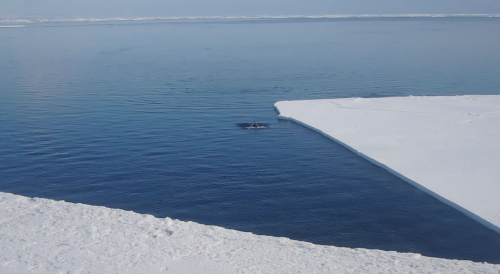 We spotted these orcas on our flight from the Dry Valleys to McMurdo this morning. Check out the video at the end of this journal.
We spotted these orcas on our flight from the Dry Valleys to McMurdo this morning. Check out the video at the end of this journal.
This morning, I said goodbye to my dive team friends James, Ian, and Shawn. It had been a great four days being with them. It was a privilege being their "dive tender". I was especially grateful for their help bringing my students into their work, literally (check yesterday's journal for details).
This morning, I was picked up by Ryan, the pilot in the A-Star helicopter, who would be taking me back to McMurdo. I will be returning back to this camp (Lake Bonney) in a few days, so I left my tent pitched and gear there. I tied things down real well so the Antarctic winds blowing down the Taylor Valley there won't blow my gear away.
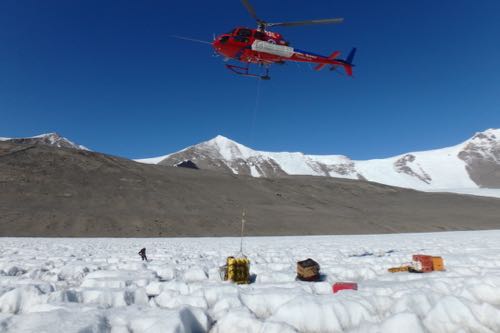 This is an A-Star helicopter we used to move the dive gear off of the lake. The A-Star was the helicopter I flew in to get back to McMurdo this morning.
This is an A-Star helicopter we used to move the dive gear off of the lake. The A-Star was the helicopter I flew in to get back to McMurdo this morning.
Enjoy the flight scenery I captured from the helicopter headed to McMurdo from the Dry Valleys
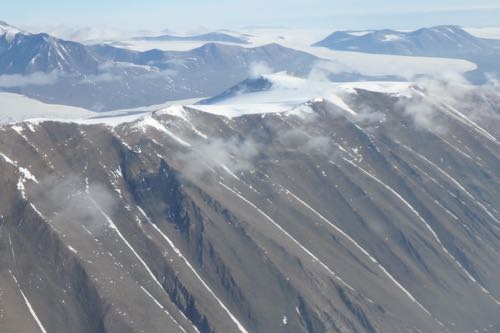 Mountain tops we flew over to get out of Taylor Valley.
Mountain tops we flew over to get out of Taylor Valley.
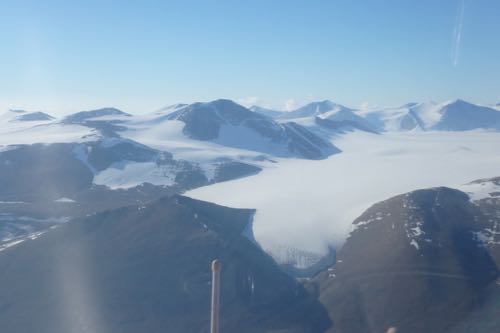 Flight scenery.
Flight scenery.
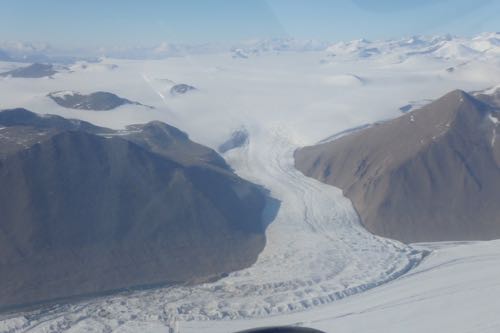
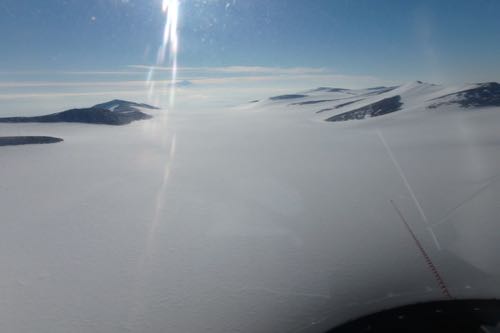
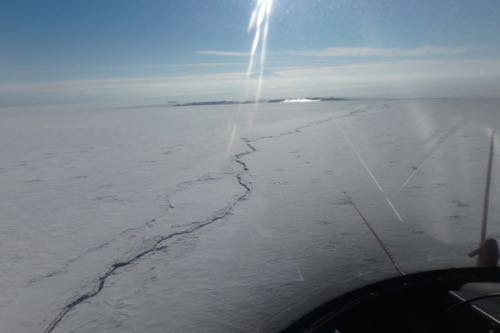 This is a river cutting through a glacier headed to McMurdo Sound.
This is a river cutting through a glacier headed to McMurdo Sound.
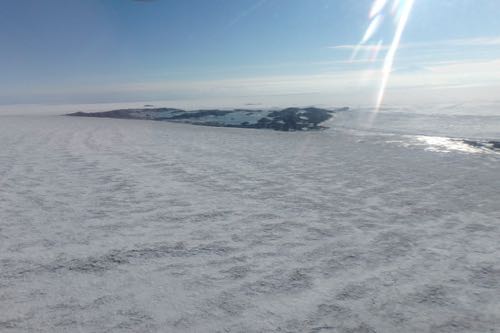 Here is the margin between a glacier and the ocean.
Here is the margin between a glacier and the ocean.
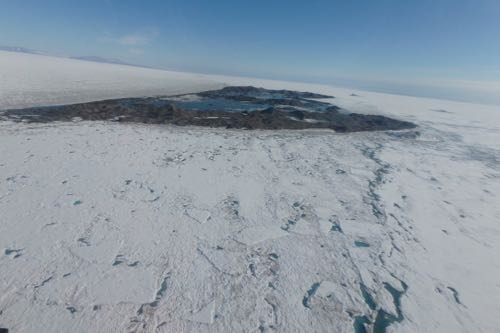 This is a rock outcropping where the glacier and ocean meet. Look closely in the middle and you can see beautiful blue ice.
This is a rock outcropping where the glacier and ocean meet. Look closely in the middle and you can see beautiful blue ice.
Check out this short video showing the orcas we spotted just after reaching McMurdo Sound.
On our flight out to the Dry Valleys about a week ago, the Coast Guard Icebreaker was spotted at the edge of the ice outside of McMurdo Sound. Here it is now. It has made it into McMurdo, but will make several loops out here breaking more ice so the large supply barge can get in here in a few days. It is so cool watching this monster tear through that thick sea ice. It is reported that Orcas follow in the icebreaker hunting seals along the way.
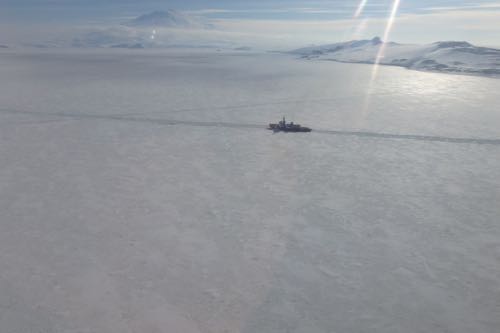 The Coast Guard icebreaker cutting a path for the resupply barge to follow. That is Ross Island in the background. Mt. Erebus on left and McMurdo just out of the picture on the right.
The Coast Guard icebreaker cutting a path for the resupply barge to follow. That is Ross Island in the background. Mt. Erebus on left and McMurdo just out of the picture on the right.
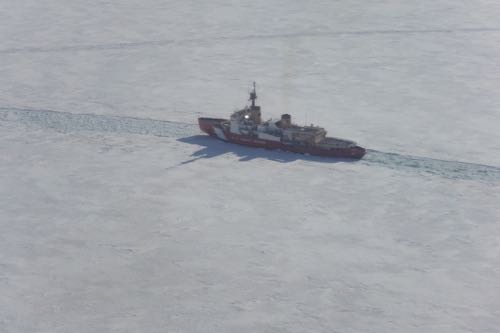 Coast Guard Icebreaker. Within the next day or so, this icebreaker will complete its job, come ashore, and we'll be eating dinner and visiting with the "Coasties" on board.
Coast Guard Icebreaker. Within the next day or so, this icebreaker will complete its job, come ashore, and we'll be eating dinner and visiting with the "Coasties" on board.

Comments
Add new comment